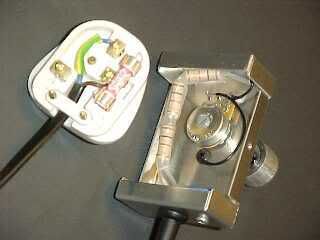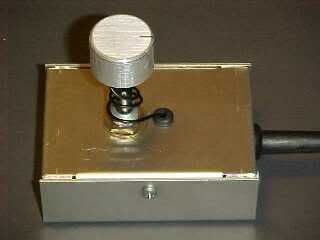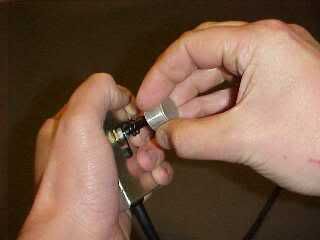MAKE A TINGLE-TRON.
Now I'm going to be quite blunt about this. This project is ONLY for those who really know and understand what they are doing. It involves passing AC current through your body in a path that may affect your heart adversely, and as such the choice of components and the quality of assembly is absolutely paramount.
The tingle-tron was the result of a discussion between electricians about the effects of various levels of current through the body. Being electricians we are no strangers to the odd electric shock now and then, so for fun we decided to see what sort of current could be handled comfortably. The unit was built and then used on everyone in the team to ascertain who could handle the most current. Obviously for macho reasons we all eventually took it to the "max" (8mA) despite it being a rather intense experience! (4mA was quite nice though)
Current flow through a human body has an effect that is proportional to the level of current flowing, and the area of flesh it is flowing through. This means that for a specific current a larger person will get less of a shock than a smaller person. In general a current range of 1mA to 8mA is detectable as a tingling that affects a single finger at 1mA to most of an arm at 8mA.
Although the level of current required to cause adverse effects in an average adult is 30mA (where the diaphram contracts and prevents breathing), the current limit I chose for this circuit is 8mA which should pose a low hazard while providing plenty of tingle-tastic fun (or pain!).
Although the level of current required to knock the heart out of sync is generally in the region of 100mA, it is still possible that even at much lower currents, someone who has an undetected heart condition or an intense fear of electricity could experience fibrillation of their heart where the heart muscles lose sync, and this could result in death. It follows that the device should only be used when someone capable of giving CPR (Cardio-pulminary-resuscitation) is present, and should not be used on anyone who declines it's promised treasures.
Use the information on this page with extreme caution and do not build the device if there is any risk whatsoever that you might build it with inadequate components or unsafe construction. Failure to do so may cause death!
For obvious reasons I cannot be held responsible for the results of your experimentation with a unit like this. You build and use a device like this entirely at your own risk.

Here's the schematic, and as you can see it's not very complicated.
The three 10 kilohm resistors act as a fixed current limiter that allows roughly 8mA to flow, and this is then limited even further by the potentiometer that varies the current between less than 1mA and the full 8mA. A good quality 1W potentiometer should be used as opposed to the cheap Maplin shit in the prototype. You can FEEL any crapiness in cheap potentiometers!
The choice of 2W resistors for the main current limiter is purely for quality and their high voltage rating. The use of three instead of a single resistor is also for safety.
The output is connected to the potentiometer knob and will take any route to earth, especially humans.
THE THREE 10K 2W RESISTORS IN THE CIRCUIT ARE THE MAIN SAFETY DEVICE. THEY _MUST_ BE TEN THOUSAND OHMS EACH AND THREE IN SERIES _MUST_ BE USED!
SPECIAL CARE WITH THE INSULATION AND COMPONENT PLACEMENT MUST BE EXCERCISED TO ENSURE THAT THE INCOMING LIVE FEED CANNOT CONTACT THE OUTPUT DEVICE ANY OTHER WAY THAN VIA THE RESISTORS

The inside of the unit is really simple. The live feed into the unit and the three 10K 2W resistors have been heavily sleeved in heatshrink sleeving for safety.
The tap from the potentiometer is taken through a small grommet to the knob.
The neutral in the two core cable is actually acting as an earth wire, and it might be preferable to use thin three core flex and discard the neutral core. The earth is bonded to the aluminium case.

It's compact and smart with no hint of the mischief it contains. The wire from the potentiometer is spiralled round the uncropped plastic shaft and connected to the knob.
If a potentiometer with a metal shaft is used, then it must be isolated from the knob to avoid shunting the current.

Here's how you use it.... Just grab the unit in one hand, then grab the knob with your other hand and twist.
Oooh... Ahhhhhh... YEOWWWW!!!!
Remember to turn the knob back down to 1mA for the next person!

Stevie demonstrates the potency of the unit at full output during a tea break.
After about 4mA your hand muscles start to contract onto the knob making it harder to turn it in a controlled manner. At the full 8mA the current is affecting most of your arms and is quite shocking!
Once again, I must stress that you build this unit entirely at your own risk and must take extreme care when doing so. Failure to observe proper construction and use of a unit like this could result in death.